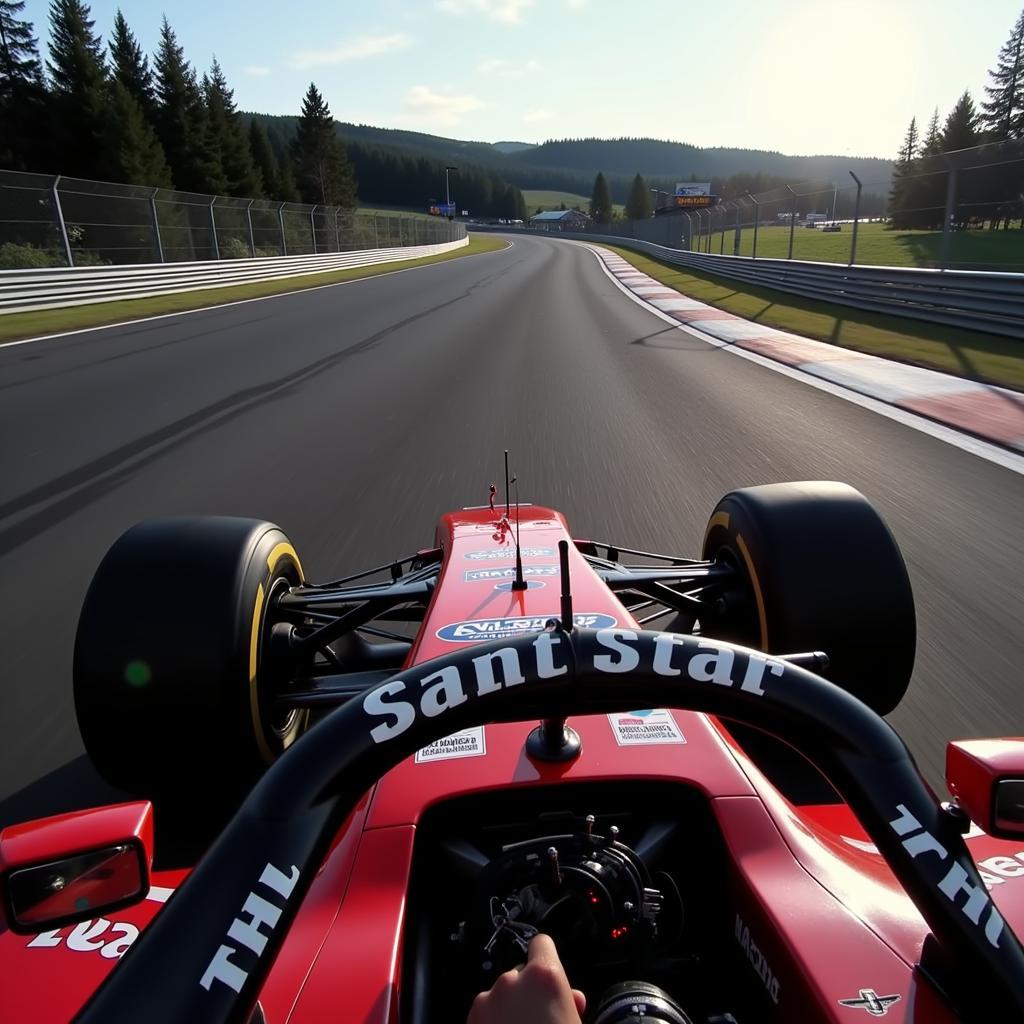The F1 2024 Canada Grand Prix throws down a challenging gauntlet for drivers and teams alike. This iconic circuit, named after the legendary Gilles Villeneuve, demands a unique setup that balances straight-line speed with agility through its demanding chicanes and high-speed corners. Whether you’re a seasoned pro or a rookie racer, nailing the perfect F1 2024 Canada Setup is crucial for conquering this thrilling track.
Understanding the Challenge: Circuit Gilles Villeneuve
Before diving into the specifics of your f1 24 setup, it’s essential to understand what makes the Circuit Gilles Villeneuve such a unique beast.
- High-Speed, Low Downforce: Long straights and fast corners dominate the Circuit Gilles Villeneuve, necessitating a low downforce setup to maximize straight-line speed.
- Heavy Braking Zones: The track features several heavy braking zones, most notably into the Hairpin (Turn 10) and the final chicane (Turns 13 & 14), putting a premium on braking stability and responsiveness.
- Technical Chicanes: Navigating the Wall of Champions (Turns 12 & 13) and other chicanes demands precision, good traction, and a car that’s responsive to driver input.
F1 2024 Canada Setup: Key Considerations
To master the Circuit Gilles Villeneuve, you need to strike a delicate balance in your setup.
Aerodynamics: Finding the Right Downforce Level
While low downforce is key for speed on the straights, you’ll need enough to maintain stability in the high-speed corners and through the chicanes.
- Front Wing: Aim for a slightly lower angle to reduce drag and maximize top speed.
- Rear Wing: Similarly, opt for a lower angle on your rear wing to minimize drag but ensure you have enough downforce for stability in the corners.
Suspension: Striking the Right Balance
Your suspension setup will significantly impact your car’s handling through the technical sections of the track.
- Ride Height: A slightly lower ride height can improve aerodynamic performance but be cautious not to sacrifice too much ground clearance, especially over the curbs.
- Anti-Roll Bars: Stiffer anti-roll bars can improve responsiveness through the quick changes of direction, particularly in the chicanes.
Braking: Power and Stability
With its heavy braking zones, the Circuit Gilles Villeneuve demands a powerful and consistent braking system.
- Brake Bias: A slightly forward brake bias (around 55-57%) can help with turn-in and stability under braking, crucial for the Hairpin.
- Brake Pressure: A higher brake pressure can provide the stopping power you need but avoid going too high as it can make the brakes overly sensitive and prone to locking up.
 F1 2024 Canada Setup: Braking Point
F1 2024 Canada Setup: Braking Point
Fine-Tuning for Success: Additional Tips
- Gearing: Optimize your gear ratios for the long straights of the Circuit Gilles Villeneuve.
- Tire Pressure: Experiment with tire pressures to find the sweet spot for grip and tire wear.
- Practice Makes Perfect: The Circuit Gilles Villeneuve is notoriously tricky; spending time practicing and fine-tuning your canada f1 24 setup is crucial for success.
Mastering the Circuit Gilles Villeneuve
“The Circuit Gilles Villeneuve demands a driver who’s not afraid to push the limits,” says former F1 driver and commentator, David Coulthard. “Getting the setup right is just the first step; you need the confidence to attack the curbs and brake late into the chicanes.”
Finding the optimal F1 2024 Canada setup requires a delicate balance between speed and stability. By focusing on aerodynamic efficiency, suspension tuning, and braking performance, you can unlock the potential to conquer this iconic circuit.





